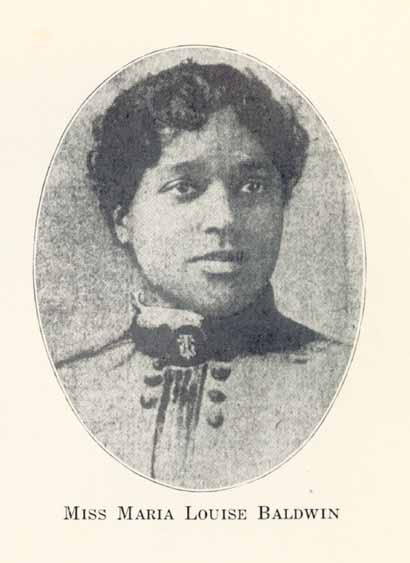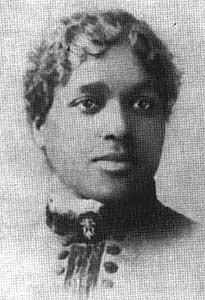|
|
At the Agassiz School, Baldwin directed the work of a dozen white teachers who taught more than 500 students, most of whom were white and many of whose parents were on the faculty of Harvard University. In 1916, at her urging, a new school building was built. Her position was elevated to "master," one of two women in the Cambridge school system and the only African-American in New England to hold such a position, which she held with great distinction and efficiency for the remainder of her life. To keep up with her field she took courses at Harvard and other institutions, and she in turn taught in the summer normal courses for teachers held at Hampton Institute in Virginia and the Institute for Colored Youth in Cheyney, PA. She organized the first Parent-Teacher group in the Cambridge Public Schools, introduced new methods of teaching mathematics, began art classes, and inspired the beginning of a science program within the school system. Under her leadership, the Agassiz became the only public school in Cambridge (and perhaps anywhere in the U.S.) to establish an "open-air" classroom (then thought to be good for frailty and pulmonary ills and a wise measure for healthy children as well). She was also the first to introduce the practice of hiring a school nurse. Baldwin's concern for children's wellbeing is legendary. She was an inspiration to generations of students, parents, educators and community members, not just in the public schools, but beyond. She belonged to numerous civic and educational organizations, lecturing widely. Her home on Prospect Street was headquarters for various literary activities. There, for years, she held a weekly reading class for African-American students attending Harvard University, which counted among its regulars W.E.B. DuBois. DuBois remembered her reverently and honored her in 1917 as "Man of the Month" in the NAACP journal, The Crisis, writing of her: "The school (Agassiz), composed of kindergartners and eight grades, is one of the best in the city and is attended by children of Harvard professors and many of the old Cambridge families. The teachers under Miss Baldwin, numbering twelve, and the 410 children are all white. Miss Baldwin thus, without a doubt, occupies the most distinguished position achieved by a person of Negro descent in the teaching world of America, outside cities where there are segregated schools." Another of Baldwin's students, the poet e.e. cummings, related that his father enrolled him at the Agassiz in 1904 because of Miss Baldwin's reputation. In his book Six Nonlectures, he wrote of her: "Miss Baldwin, the dark lady mentioned in my first nonlecture (and a lady if ever a lady existed) was blessed with a delicious voice, charming manners, and a deep understanding of children. Never did any semidevine dictator more gracefully and easily rule a more unruly and less graceful populace. Her very presence emanated an honour and a glory . . . . From her I marvellingly learned that the truest power is gentleness."
Baldwin enjoyed the friendship and wise counsel of numerous African-Americans whose views she shared, such as William Monroe Trotter (publisher and editor of The Boston Guardian), and Archibald Grimké, Harvard Law School graduate and editor of The Hub newspaper in Boston. She opposed all forms of racial discrimination and praised the achievements of African-Americans. Perhaps no teacher has inspired as many or been loved more. Upon her death in 1922, Baldwin was greatly mourned. Funeral services were held at the Arlington Street Unitarian Church. Her friends, pupils and colleagues at the school established a scholarship for Agassiz pupils and named the school's auditorium in her memory. The 1916 Agassiz School building was torn down in 1993 and replaced with a new building dedicated in 1995. Architectural elements from the auditorium were retained in the new building and may be seen in the library media center. Following a campaign by a group that included students from the school, the principal, and parents, on May 21, 2002, the Cambridge School Committee unanimously voted to rename the Agassiz School the Maria L. Baldwin School. For a video about the school today, Click Here. Adapted from articles at: |






